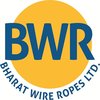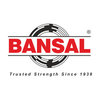Filter interviews by
Bansal Wire Industries Maintenance Electrician Interview Questions and Answers
15 Interview questions
A relay is an electrically operated switch that uses an electromagnet to mechanically control the opening and closing of contacts.
Relays are commonly used in electrical systems to control high-power devices with low-power signals.
They are used to isolate circuits, amplify signals, and provide electrical protection.
Relays can be found in various applications such as industrial machinery, automotive systems, and hom...
A diode is an electronic component that allows current to flow in one direction and blocks it in the opposite direction.
Diodes are commonly used in rectifier circuits to convert AC to DC.
They have two terminals: an anode (positive) and a cathode (negative).
When the voltage across a diode is forward-biased, it allows current to flow.
When the voltage is reverse-biased, it blocks the current.
Diodes are used in variou...
A rectifier is an electrical device that converts alternating current (AC) to direct current (DC).
Rectifiers are commonly used in power supplies to convert AC voltage to DC voltage.
They are essential in many electronic devices, such as computers, televisions, and smartphones.
Rectifiers can be classified into different types, including half-wave rectifiers, full-wave rectifiers, and bridge rectifiers.
They typically...
Resistance is the opposition to the flow of electric current in a circuit.
Resistance is measured in ohms (Ω).
It is caused by factors such as the material of the conductor, its length, and its cross-sectional area.
Resistance can be calculated using Ohm's Law: R = V/I, where R is resistance, V is voltage, and I is current.
Higher resistance leads to lower current flow.
Examples of resistance include the filament in a ...
a.c.v stands for alternating current voltage.
a.c.v refers to the voltage of an alternating current (AC) system.
It is the measurement of the electrical potential difference in an AC circuit.
AC voltage constantly changes direction and magnitude over time.
It is typically measured in volts (V).
A NO NC push button is a type of push button switch that has normally open (NO) and normally closed (NC) contacts.
NO NC push buttons are commonly used in electrical circuits to control the flow of current.
The NO contact is open when the button is not pressed and closes when the button is pressed.
The NC contact is closed when the button is not pressed and opens when the button is pressed.
These push buttons are ofte...
A timer is a device used to measure and control the passage of time.
Timers are commonly used in various electrical and electronic systems.
They can be used for scheduling and automating tasks.
Timers can be digital or analog, and may have different modes of operation such as countdown or interval timing.
Examples of timer applications include turning lights on and off at specific times, controlling the duration of in...
An AC motor is an electric motor that operates on alternating current, converting electrical energy into mechanical energy.
AC motor stands for Alternating Current motor.
It is commonly used in various applications such as industrial machinery, appliances, and HVAC systems.
AC motors consist of a stator and a rotor.
The stator contains coils that produce a rotating magnetic field when supplied with AC current.
The roto...
A relay is an electrical device that acts as a switch, using an electromagnet to control the flow of current in a circuit.
Relays are used to control high-power devices with low-power signals.
They consist of an electromagnet, a set of contacts, and a spring.
When the coil of the electromagnet is energized, it creates a magnetic field that attracts the contacts, closing the circuit.
Relays are commonly used in industr...
MCB and DOL Starter are both electrical devices used for protection and control, but they have different applications.
MCB stands for Miniature Circuit Breaker, while DOL Starter stands for Direct-On-Line Starter.
MCB is used for protecting electrical circuits from overcurrents and short circuits, while DOL Starter is used for starting and stopping motors.
MCB is a compact device that can be manually reset after trip...
Bansal Wire Industries Maintenance Electrician Interview Experiences
1 interview found
(13 Questions)
- Q1. What is power factor
- Ans.
Power factor is a measure of how effectively electrical power is being used in a circuit.
Power factor is the ratio of real power (in watts) to apparent power (in volt-amperes).
It indicates the efficiency of electrical equipment in converting electrical power into useful work.
A power factor of 1 means all the power is being used effectively, while a power factor less than 1 indicates wastage of power.
Inductive loads lik...
- Q2. What is different between MCB and dol Starter
- Ans.
MCB and DOL Starter are both electrical devices used for protection and control, but they have different applications.
MCB stands for Miniature Circuit Breaker, while DOL Starter stands for Direct-On-Line Starter.
MCB is used for protecting electrical circuits from overcurrents and short circuits, while DOL Starter is used for starting and stopping motors.
MCB is a compact device that can be manually reset after tripping,...
- Q3. What is ragistance
- Ans.
Resistance is the opposition to the flow of electric current in a circuit.
Resistance is measured in ohms (Ω).
It is caused by factors such as the material of the conductor, its length, and its cross-sectional area.
Resistance can be calculated using Ohm's Law: R = V/I, where R is resistance, V is voltage, and I is current.
Higher resistance leads to lower current flow.
Examples of resistance include the filament in a light...
- Q4. What is timer and used
- Ans.
A timer is a device used to measure and control the passage of time.
Timers are commonly used in various electrical and electronic systems.
They can be used for scheduling and automating tasks.
Timers can be digital or analog, and may have different modes of operation such as countdown or interval timing.
Examples of timer applications include turning lights on and off at specific times, controlling the duration of industr...
- Q5. What is relay what do work
- Ans.
A relay is an electrical device that acts as a switch, using an electromagnet to control the flow of current in a circuit.
Relays are used to control high-power devices with low-power signals.
They consist of an electromagnet, a set of contacts, and a spring.
When the coil of the electromagnet is energized, it creates a magnetic field that attracts the contacts, closing the circuit.
Relays are commonly used in industrial a...
- Q6. What is vfd
- Ans.
VFD stands for Variable Frequency Drive.
VFD is an electronic device used to control the speed and torque of an electric motor.
It converts fixed frequency and voltage input into variable frequency and voltage output.
VFDs are commonly used in industrial applications to save energy and improve motor control.
They can be found in HVAC systems, pumps, fans, conveyors, and other motor-driven equipment.
VFDs allow for precise c...
- Q7. What is ac motor
- Ans.
An AC motor is an electric motor that operates on alternating current, converting electrical energy into mechanical energy.
AC motor stands for Alternating Current motor.
It is commonly used in various applications such as industrial machinery, appliances, and HVAC systems.
AC motors consist of a stator and a rotor.
The stator contains coils that produce a rotating magnetic field when supplied with AC current.
The rotor, wh...
- Q8. What is no nc push botton
- Ans.
A NO NC push button is a type of push button switch that has normally open (NO) and normally closed (NC) contacts.
NO NC push buttons are commonly used in electrical circuits to control the flow of current.
The NO contact is open when the button is not pressed and closes when the button is pressed.
The NC contact is closed when the button is not pressed and opens when the button is pressed.
These push buttons are often use...
- Q9. What is rectifier
- Ans.
A rectifier is an electrical device that converts alternating current (AC) to direct current (DC).
Rectifiers are commonly used in power supplies to convert AC voltage to DC voltage.
They are essential in many electronic devices, such as computers, televisions, and smartphones.
Rectifiers can be classified into different types, including half-wave rectifiers, full-wave rectifiers, and bridge rectifiers.
They typically cons...
- Q10. What is induction slipring motor
- Ans.
An induction slipring motor is a type of motor that uses slip rings to provide power to the rotor winding.
An induction slipring motor is also known as a wound rotor motor.
It consists of a stator, rotor, and slip rings.
The slip rings are connected to external resistors or other devices.
The slip rings allow external control of the rotor circuit.
This type of motor is commonly used in applications where high starting torqu...
- Q11. What is different between ocv and acv
- Ans.
OCV stands for Open Circuit Voltage and ACV stands for Alternating Current Voltage.
OCV is the voltage measured when there is no load connected to a circuit.
ACV is the voltage of an alternating current, which periodically changes direction.
OCV is typically measured using a voltmeter, while ACV is measured using an oscilloscope.
OCV is commonly used to determine the state of charge of a battery, while ACV is used to measu...
- Q12. What is relay
- Ans.
A relay is an electrically operated switch that uses an electromagnet to mechanically control the opening and closing of contacts.
Relays are commonly used in electrical systems to control high-power devices with low-power signals.
They are used to isolate circuits, amplify signals, and provide electrical protection.
Relays can be found in various applications such as industrial machinery, automotive systems, and home app...
- Q13. What is. a.c.v
- Ans.
a.c.v stands for alternating current voltage.
a.c.v refers to the voltage of an alternating current (AC) system.
It is the measurement of the electrical potential difference in an AC circuit.
AC voltage constantly changes direction and magnitude over time.
It is typically measured in volts (V).
(2 Questions)
- Q1. What is different ac motor and dc motor
- Ans.
AC motors and DC motors differ in their power source and construction.
AC motors run on alternating current, while DC motors run on direct current.
AC motors use an alternating magnetic field to generate torque, while DC motors use a permanent magnet or electromagnet.
AC motors are typically more efficient and require less maintenance than DC motors.
AC motors are commonly used in household appliances, industrial machinery...
- Q2. What is diode
- Ans.
A diode is an electronic component that allows current to flow in one direction and blocks it in the opposite direction.
Diodes are commonly used in rectifier circuits to convert AC to DC.
They have two terminals: an anode (positive) and a cathode (negative).
When the voltage across a diode is forward-biased, it allows current to flow.
When the voltage is reverse-biased, it blocks the current.
Diodes are used in various app...
Interview Preparation Tips
Skills evaluated in this interview
Top trending discussions






Interview questions from similar companies

ITI Electrician Interview Questions & Answers
Tata Steel Downstream Productsposted on 25 Oct 2021
I applied via Company Website and was interviewed in Sep 2021. There was 1 interview round.
Interview Questionnaire
1 Question
- Q1. What is the name of part in AC motor
- Ans.
The part in AC motor is called a rotor.
The rotor is the rotating part of the motor that converts electrical energy into mechanical energy.
It is made up of a cylindrical core with conductive windings and is mounted on a shaft.
The rotor rotates inside the stator, which is the stationary part of the motor.
The rotor is also known as the armature in some types of AC motors.

I appeared for an interview in Sep 2024, where I was asked the following questions.
- Q1. Star delta diagram
- Ans.
A star-delta diagram illustrates a method for reducing the starting current of three-phase induction motors.
The star-delta starter connects the motor in star configuration during startup to limit current.
After a few seconds, it switches to delta configuration for normal operation, allowing full power.
This method is commonly used for large motors (e.g., 10 HP and above) to prevent electrical stress.
The diagram typically...
- Q2. How many load dg full load
- Ans.
Understanding load capacity is crucial for maintenance engineers to ensure equipment operates efficiently and safely.
Full load current (FLC) is the maximum current a motor can draw under full load conditions.
For example, a 10 HP motor at 460V has an FLC of approximately 12.5 amps.
Calculating load helps in selecting appropriate circuit breakers and wiring.
Consider factors like power factor and efficiency when determinin...
- Q3. Star delta connection
Interview Preparation Tips

Electrician Interview Questions & Answers
Tata Steel Downstream Productsposted on 14 May 2023

(4 Questions)
- Q1. What is current
- Ans.
Current is the flow of electric charge, measured in amperes, and is essential for powering electrical devices.
Current is defined as the rate of flow of electric charge.
Measured in amperes (A), where 1 ampere equals 1 coulomb of charge per second.
There are two types of current: direct current (DC) and alternating current (AC).
DC flows in one direction, like in batteries, while AC changes direction periodically, as in ho...
- Q2. What is transformer
- Ans.
A transformer is an electrical device that transfers electrical energy between circuits through electromagnetic induction.
Transforms voltage levels: Steps up or steps down voltage as needed.
Consists of primary and secondary coils: The primary coil receives input voltage, while the secondary delivers output voltage.
Used in power distribution: Essential for transmitting electricity over long distances.
Example: A step-dow...
- Q3. 1.the flow free electron in aconductor is called as current.
- Ans.
Yes, the flow of free electrons in a conductor is called current.
Current is the flow of electric charge through a conductor.
In a conductor, such as a wire, free electrons move in response to an electric field, creating current.
The unit of current is the ampere (A).
Examples of conductors include metals like copper and aluminum.
- Q4. 2.transformers is a static device which is increase or decrease voltage and current without changing frequency
Interview Preparation Tips

Maintenance Engineer Interview Questions & Answers
Bharat Wire Ropesposted on 19 Mar 2024
I applied via Naukri.com and was interviewed before Mar 2023. There were 2 interview rounds.
(1 Question)
- Q1. Regrading yourself and regrading curr ctc and exp. Ctc
(1 Question)
- Q1. What is 7qc tool and Regrading mttr, mtbf, and some question releted to types of breakdown types of failure and how can reduce mttr.
- Ans.
7QC tools are quality control tools used to identify and solve quality-related issues. MTTR stands for Mean Time To Repair, MTBF stands for Mean Time Between Failures.
7QC tools include Pareto analysis, cause-and-effect diagram, scatter diagram, etc.
MTTR is the average time taken to repair a failed component or system.
MTBF is the average time between failures of a component or system.
Types of breakdowns can include mech...

I applied via Referral and was interviewed in Feb 2021. There was 1 interview round.
Interview Questionnaire
1 Question
- Q1. Previous work schedule
- Ans.
My previous work schedule was structured around a standard 9-to-5, with flexibility for overtime and project deadlines.
Worked Monday to Friday, 8 AM to 5 PM, with an hour for lunch.
Occasionally stayed late to meet project deadlines, especially during peak production periods.
Participated in weekend shifts during major product launches or maintenance shutdowns.
Had regular team meetings every Wednesday to discuss progress...
Interview Preparation Tips

Production Engineer Interview Questions & Answers
B.C. Jindal Group of Companiesposted on 5 Jul 2025
I appeared for an interview in Jun 2025, where I was asked the following questions.
- Q1. What is the purpose of shifting the intermediate rolls in a 6-Hi mill?
- Ans.
Shifting intermediate rolls in a 6-Hi mill optimizes strip thickness and improves product quality.
Enhances control over strip thickness by adjusting roll positions.
Allows for better reduction ratios, improving material properties.
Facilitates the processing of a wider range of materials, such as stainless steel.
Improves surface finish by minimizing defects during rolling.
- Q2. What kind of maintenance is critical for the 6-Hi mill rolls?
- Ans.
Critical maintenance for 6-Hi mill rolls ensures optimal performance and longevity, preventing defects in rolled products.
Regular inspection for wear and tear to identify issues early.
Lubrication of bearings and roll surfaces to reduce friction.
Alignment checks to ensure rolls are properly positioned.
Replacement of worn rolls to maintain product quality.
Monitoring temperature and pressure during operation to prevent ov...
- Q3. What lubrication systems are used in cold mills?
- Ans.
Cold mills utilize various lubrication systems to reduce friction and wear, ensuring efficient metal processing.
1. Oil Mist Lubrication: Delivers fine oil mist to reduce friction in bearings and gears.
2. Centralized Lubrication Systems: Automatically distributes lubricant to multiple points, ensuring consistent application.
3. Grease Lubrication: Used in specific areas where oil might not stay, providing a thicker prote...
Interview Preparation Tips

Assistant Manager Interview Questions & Answers
POSCO MAHARASHTRA STEELposted on 24 May 2021
I appeared for an interview before May 2020.
Interview Questionnaire
2 Questions
- Q1. Tell me something about yourself
- Ans.
I am a highly motivated and experienced professional with a strong background in management and leadership.
I have over 5 years of experience in management roles, including 2 years as an Assistant Manager at XYZ Company.
I have successfully led teams of up to 20 employees, ensuring efficient operations and high customer satisfaction.
I am skilled in strategic planning, problem-solving, and decision-making, which have cont...
- Q2. Please tell me about your 3 strengths and 3 weakness.
- Ans.
My strengths are leadership, problem-solving, and communication. My weaknesses are time management, delegation, and public speaking.
Strength: Leadership - I have a natural ability to inspire and motivate a team, and I excel at guiding others towards achieving common goals.
Strength: Problem-solving - I am skilled at analyzing complex situations, identifying potential solutions, and making informed decisions.
Strength: Co...
Interview Preparation Tips
Secondly, do home work about job profile, company and basics of your study, read your Cv and emove errors if any. Read company reviews before going for interview.
Thirdly, greet interviewer while entering room, reach 15 minutes before interview, seat calm and get you cool at new place. When answering questions do not be over smart, do not lie, do not show attitude in language. Be confident and clear in communication. Try to speak in English only. If required then use local language.

I appeared for an interview in Jun 2020.
Interview Questionnaire
1 Question
- Q1. Profile work of whole career and conceptual knowledge of various aspects...
Interview Preparation Tips

Deputy Manager Interview Questions & Answers
Tata Steel Downstream Productsposted on 13 Nov 2020
I appeared for an interview in May 2020.
Interview Questionnaire
1 Question
- Q1. About the previous professional experience.
Interview Preparation Tips
Bansal Wire Industries Interview FAQs
Tell us how to improve this page.
Bansal Wire Industries Interviews By Designations
- Bansal Wire Industries Production Engineer Interview Questions
- Bansal Wire Industries Senior Executive Interview Questions
- Bansal Wire Industries Store Executive Interview Questions
- Bansal Wire Industries Executive SCM Interview Questions
- Bansal Wire Industries Maintenance Electrician Interview Questions
- Bansal Wire Industries Wire Drawing Machine Operator Interview Questions
Interview Questions for Popular Designations
- Maintenance Engineer Interview Questions
- Electrician Interview Questions
- Electrical Technician Interview Questions
- ITI Electrician Interview Questions
- Senior Technician Interview Questions
- Maintenance Supervisor Interview Questions
- Maintenance Technician Interview Questions
- Senior Electrician Interview Questions
- Show more
Overall Interview Experience Rating
based on 1 interview experience
Difficulty level
Duration
Interview Questions from Similar Companies
|
Production Engineer
34
salaries
| ₹1.8 L/yr - ₹4.2 L/yr |
|
Production Supervisor
24
salaries
| ₹1.8 L/yr - ₹3.6 L/yr |
|
Quality Engineer
13
salaries
| ₹1.8 L/yr - ₹3 L/yr |
|
Supervisor
11
salaries
| ₹2.2 L/yr - ₹4.5 L/yr |
|
Mechanical Maintenance Engineer
9
salaries
| ₹2.4 L/yr - ₹6.1 L/yr |

ArcelorMittal

B.C. Jindal Group of Companies

Tata Steel Downstream Products

Tata BlueScope Steel
- Home >
- Interviews >
- Bansal Wire Industries Interview Questions











